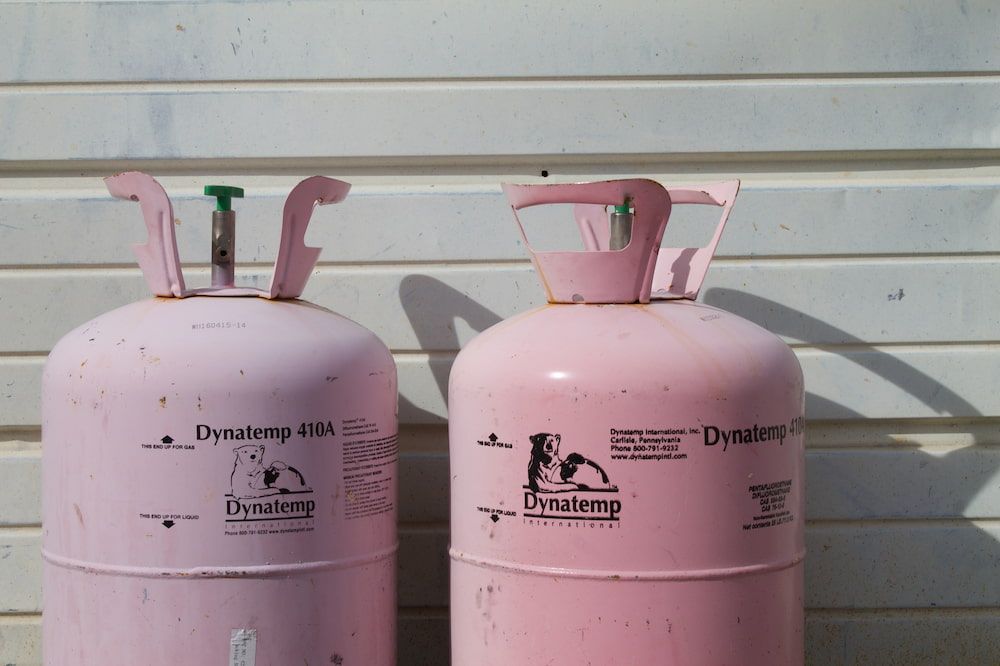This is a subtitle for your new post

Understanding Gas Cylinder Sizes For Each Clean Agent
As you view fire suppression systems, selecting the right gas cylinder size is crucial for adequate protection. Whether you're considering Novec 1230, FM-200, or Inergen, each clean agent comes with specific cylinder options, measured in pounds and litres.
When choosing your gas cylinder sizes, you have to realise that this decision could be the difference between a fire outbreak causing massive damage and safety for you, your family, staff, or friends.
Thus, by the end of our article, we will have given you a clearer understanding of how to match cylinder sizes with your fire safety requirements. Let's explore each clean agent fire suppression fluid and what it aligns with!
What Are the Main Clean Agent Fire Suppression Fluids?
Clean agent fire suppression systems are renowned for swiftly and effectively suppressing flames while minimising damage to your property, staff, and supplies. They leave no residue, ensuring rapid recovery and getting back to business, along with protecting all of your sensitive equipment.
However, before looking into the gas cylinder sizes for each clean agent, you first need to understand what the main clean agent suppressant fluids you can purchase for your system are. Here are the main clean agents that are
used within fire protection systems:
Inergen (IG-541)
If you look closer at the different components of Inergen systems, it is a blend of naturally occurring gases, including 52% nitrogen, 40% argon, and 8% carbon dioxide. Its primary focus is to reduce oxygen levels in the room in which it is installed to a level where the flame can no longer be lit or sustained, effectively suppressing fires without introducing harmful byproducts.
If you take the leap and install Inergen fire suppression systems on your property, you can expect it (like other clean agent fire suppression fluids) to be safe during evacuation, meaning there will be no long-term effects in the event of a fire. Instead, you can just focus on gathering all of your belongings and getting people outside while the protection system works its magic.
FM-200 (HFC-227ea)
In regards to HFC-227ea—more commonly known as FM-200 in the industry—it is an extremely popular clean agent. Essentially, when the system discharges the suppressant fluid, it extinguishes fires by absorbing heat and interrupting the combustion process.
FM-200 is widely used in areas where a more conventional water-based system is impractical due to its lack of drenching effect. On the other hand, water-based systems can have a drenching effect that will cause internal damage to your sensitive equipment, including electronic devices.
Novec 1230
Novec 1230, which was first seen as a halon replacement, is a fluorinated ketone that is renowned for its rapid-fire suppression capabilities compared to other extinguishing systems you can purchase on the market.
This clean agent is also incredibly environmentally friendly, with little atmospheric lifetime, ozone depletion potential, and global warming potential, along with leaving zero residues behind in the aftermath of a fire in comparison to a traditional inert gas system. Additionally, it is suitable for a wide range of applications, from data centres and server rooms to museums and IT rooms.
The Gas Cylinder Sizes For Each Clean Agent
Now that you have a brief overview of what each main clean agent is and how it can be used within the application you’re in, understanding the sizes of each gas cylinder will help you make an informed decision on what clean agent to choose from, in relation to the storage space you have within your building. Let’s take a look at the approximate gas cylinder sizes for each agent:
Inergen Cylinder Sizes
Inergen cylinder sizes will typically vary, based on the number of cylinders you feel you’re going to need to store the fire suppression agent, among a few other factors. The sizes are commonly specified in litres and the amount of KG's it takes to fill the clean agents; thus, this will indicate the amount of Inergen gas contained in each cylinder. Here are a few examples of Inergen cylinder sizes:
- 20.32 KG to fill: Approximately 67 litres at 200 bar
- 24.08 KG to fill: Approximately 80 litres at 200 bar
- 33.50 KG to fill: Approximately 80 litres at 300 bar
- 42.14 KG to fill: Approximately 140 litres at 200 bar
- 58.50 KG to fill: Approximately 140 litres at 300 bar
It's important to note that these are approximate conversions, as the volume of gas can vary based on factors such as supplier, pressure, and temperature. However, with your gas cylinders moving forward, we always advise that you hire an experienced specialist to come and view your property before blindly installing these systems within your application.
Novec 1230 and FM-200 Cylinder Sizes
Novec 1230 is similar in the sense that they’re also stored within various sizes of cylinders to give businesses options to choose from when needing a tailored experience. These are a few of the approximate Novec 1230 and FM-200 cylinder sizes, available in both 25 or 42 bar with their minimum and maximum fill range (measured in KG):
- 15 Litres: Fill Range - min. 6KG, max. 13.5 KG
- 30 Litres: Fill Range - min. 12KG, max. 27 KG
- 50 Litres: Fill Range - min. 20KG, max. 45 KG
- 80 Litres: Fill Range - min. 32KG, max. 72 KG
- 120 litres: Fill Range - min. 48KG, max. 108 KG
- 150 Litres: Fill Range - min. 60KG, max. 135 KG
- 180 Litres: Fill Range - min. 72KG, max. 162 KG
Which Clean Agent Cylinder Should You Choose For Storage Efficiency?
If we’re talking about how big the cylinder is and how much space it will take as an individual cylinder, Inergen cylinders require the largest storage area compared to 3M Novec 1230 and FM-200. Therefore, in that regard, if you only have a small storage capacity, Novec and FM-200 may work better for you.
However, in terms of the actual efficiency of the product, Inergen doesn’t need to be stored as a liquid or compressed gas; rather, it is stored at atmospheric pressure in cylinders. This unique trait allows for efficient storage without the need for high-pressure cylinders or bulky storage arrangements.
In essence, effectiveness changes depending on your application and the type of fire suppression system you’ll be using. Therefore, if you’re interested in finding out more about how you can install a fire suppression system in your building to best secure your people and equipment, speak to our team today via the Contact Us section, and we’d be happy to help!


